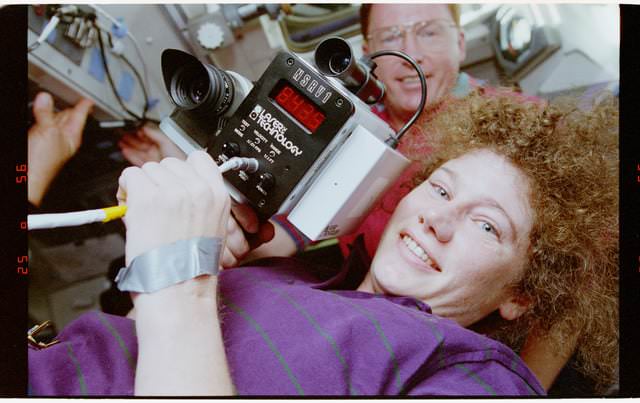When we started the company in 1985, we had no idea that we would be designing and building lasers for the US government. It was an incredible moment when LTI first started working with them over 25 years ago designing a laser that measured distances between 2 planes in-flight for a de-icing exercise. Then in 1991, we were approached by NASA — they needed a handheld laser that could measure both distance and speed to support Space Shuttle mission STS-49, the retrieval of the International Telecommunications Satellite (Intelsat).
When NASA contacted us they said that they needed a laser that could measure distances to 0.1 feet and speeds to 0.01 feet-per-second, which was a challenge considering that our speed measurement laser at the time had a distance accuracy of 0.5 feet and a speed accuracy of 1 mile-per-hour. The saving grace was that they could live with up to a 5 second measurement time, while our traffic laser had to measure in 0.3 seconds. We were able to modify a standard LTI 20-20 laser speed gun to increase the measurement time and display speeds to 0.01 feet per second.

Laser Technology develops close proximity laser for NASA
NASA evaluated LTI’s modifed speed gun, along with several other instruments from our competitors. During their evaluations Jeremy Dunne and myself travelled to the Johnson Space Center in Houston to observe some of their testing. They escorted us down into the basement of a large warehouse where they had a large test simulator which was basically a 200 pound block of granite that moved along a 200 foot long metal rail. They set the laser at one end of the rail and moved the granite block down the rail at various speeds (all very slow!).
NASA was very impressed with the performance of our laser and selected it over our competitor’s products based on reliability, portability, cost efficiency, maximum range and accuracy.
The amazing thing about the whole NASA project is that LTI only had to make a few minor modifications to the standard LTI 20-20 to make it approved for use on the Space Shuttle. The LTI 20-20 was designed to be bullet-proof for use by law enforcement and was basically an aerospace-grade instrument right off the production line.
While the changes for NASA were relatively minor, they were still very challenging – like how could we make a measurement through the Shuttle overhead window that was made up of 7 panes of laminated glass! We also had to paint the unit with specially approved aerospace paint that wouldn’t emit toxic gases inside the Shuttle and possible harm the astronauts.
The project that began as one special laser for one specific mission turned into a long term relationship between LTI’s technology and the Shuttle program, up until the Shuttle was grounded for good in 2011. NASA ended up buying several more LTI lasers and started flying them as standard equipment on every Shuttle mission which involved “close proximity operations” – ie. satellite deployment and retrieval or any docking maneuvers.
The LTI lasers were used on all the missions where the Shuttle docked with the Russian Mir space station! Originally NASA would take two of the LTI lasers on each mission, having a backup unit in case one failed. However, after several initial missions they found that the LTI equipment always performed, so they started only taking one unit because they knew they could count on our reliability – plus they needed all the cargo space they could get for other critical items.
Note: The first mission that NASA used our laser device was in May 1992.